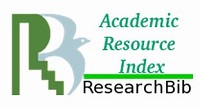Investigating the Gold Investment Decision during the COVID-19 Pandemic in Bengkulu City, Indonesia
DOI:
https://doi.org/10.56225/finbe.v2i3.291Keywords:
Investment decision, Gold, Sociodemographic, Risk tolerance, COVID-19 pandemicAbstract
The current landscape of the Indonesian economy bears the weight of the COVID-19 pandemic, witnessing a widespread downturn across nearly all sectors. In response to this economic strain, one potential avenue for bolstering or preserving individual welfare levels lies in investment strategies. This study scrutinises the impact of various sociodemographic factors on individuals' decisions to invest in gold amidst the COVID-19 crisis. Specifically, gender, age, education, occupation, income, and risk tolerance are examined to discern their influence on gold investment decisions. Conducted within Bengkulu City, the study engages with 190 respondents and employs multiple regression techniques to illuminate key insights. This research reveals a nuanced interplay between sociodemographic variables and gold investment choices during the pandemic. Gender, age, income, and risk tolerance are significant influencers, exerting discernible effects on individuals' inclinations toward gold investment. Notably, the analysis unveils that gender and age dynamics, alongside income disparities, play pivotal roles in shaping investment behaviours, with certain demographics exhibiting a heightened propensity for gold investment in the face of economic uncertainty. Conversely, the impact of education and occupation on gold investment decisions appears less pronounced within the context of Bengkulu City during the pandemic. While these variables undoubtedly shape individuals' financial dispositions, their direct influence on the inclination toward gold investment seems less substantial amidst the prevailing economic challenges. In essence, this study underscores the multifaceted nature of investment decision-making during times of crisis, shedding light on the intricate interplay between sociodemographic factors and investment behaviours. By unravelling these dynamics, policymakers, and investors can glean valuable insights into crafting tailored strategies to navigate economic turbulence and safeguard individual welfare amid uncertainty.
References
Adioetomo, S. M., & Samosir, O. B. (2010). Dasar-dasar demografi. In Jakarta: Salemba Empat.
Adiyono, M., Suryaputri, R. V, Efan, E., & Kumala, H. (2021). Analisis Alternatif Pilihan Investasi Pada Era Digitalisasi. Jurnal Akuntansi Trisakti, 8(2), 227–248. https://doi.org/10.25105/jat.v8i2.9678
Aminatuzzahra, A., & Nasir, M. (2014). Persepsi Pengaruh Pengetahuan Keuangan,Sikap Keuangan, Sosial Demografi Terhadap Prilaku Keuangan Dalam Pengambilan Keputusan Investasi Individu (pp. 1–128). UNDIP: Fakultas Ekonomika dan Bisnis.
Amindoni, A. (2020). Virus corona: Gelombang PHK di tengah pandemi Covid-19 diperkirakan mencapai puncak bulan Juni, Kartu Prakerja dianggap tak efektif. In Diakses pada pukul (Vol. 21).
Aviyanti, S. C., & Isbanah, Y. (2019). Pengaruh eco-efficiency, corporate social responsibility, ownership concentration, dan cash holding terhadap nilai perusahaan sektor consumer goods di bei periode 2011-2016. Jurnal Ilmu Manajemen, 7(1), 77–84.
Ayu Wulandari, D., & Iramani, R. (2014). Studi experienced regret, risk tolerance, overconfidance dan risk perception pada pengambilan keputusan investasi. Journal of Business and Banking, 4(1), 55. https://doi.org/10.14414/jbb.v4i1.293
Barber, B. M., & Odean, T. (2001). Boys will be Boys: Gender, Overconfidence, and Common Stock Investment. The Quarterly Journal of Economics, 116(1), 261–292. https://doi.org/10.1162/003355301556400
Bhandari, G., & Deaves, R. (2006). The Demographics of Overconfidence. Journal of Behavioral Finance, 7(1), 5–11. https://doi.org/10.1207/s15427579jpfm0701_2
Chavali, K., & Mohanraj, M. P. (2016). Impact of demographic variables and risk tolerance on investment decisions–an empirical analysis. International Journal of Economics and Financial Issues, 6(1), 169–175.
Daft, J., & Albers, S. (2012). A profitability analysis of low-cost long-haul flight operations. Journal of Air Transport Management, 19(1), 49–54. https://doi.org/10.1016/j.jairtraman.2012.01.010
Das, S., & Jain, R. (2014). A study on the influence of demographical variables on the factors of investment-a perspective on the Guwahati region. International Journal of Research in Humanities, Arts and Literature, 2(6), 97–102.
Dewanata, P., & Achmad, T. (2016). Pengaruh Perencanaan Pajak terhadap Nilai Perusahaan dengan Kualitas Corporate Governance sebagai Variabel Moderasi (Studi Empiris pada Perusahaan Manufaktur yang Terdaftar di BEI Tahun 2012-2014) (pp. 1–7). Fakultas Ekonomika Dan Bisnis.
Dewi, G. A. K. R. S. (2018). Investasi dan pasar modal Indonesia. Rajawali Pers.
Fachrudin, K. R., & Fachrudin, K. A. (2016). The Influence OF The influence of education and experience toward investment decision with moderated by financial literacy. Polish Journal of Management Studies, 14(2), 51–60. https://doi.org/10.17512/pjms.2016.14.2.05
Fakhrunnas, F. (2020). Investasi Sebelum dan Sesudah Pandemi Covid-19, Bagaimana Pengaruhnya. In Retrieved from Fecon. uii. ac. id: https://fecon. uii. ac. id/blog/2020/08/01/investasi-sebelum-dan-sesudah-pandemi-covid-19-bagaimana-pengaruhnya.
Feng, L., & Seasholes, M. S. (2005). Do Investor Sophistication and Trading Experience Eliminate Behavioral Biases in Financial Markets? Review of Finance, 9(3), 305–351. https://doi.org/10.1007/s10679-005-2262-0
Hani, S., Heru, S. S., & Isworo, E. S. (2020). The effect of investment education and investment experience on investment decision with financial knowledge as intervening variable. Russian Journal of Agricultural and Socio-Economic Sciences, 99(3), 143–150.
Haryanti, R., Fahrudin, A., & Susanto, H. A. (2020). Analysis degradation of mangrove vegetation in Tangerang District, Banten Province. IOP Conference Series: Earth and Environmental Science, 441(1), 012–109. https://doi.org/10.1088/1755-1315/441/1/012109
Hayhoe, C. R., Leach, L. J., Turner, P. R., Bruin, M. J., & Lawrence, F. C. (2000). Differences in Spending Habits and Credit Use of College Students. Journal of Consumer Affairs, 34(1), 113–133. https://doi.org/10.1111/j.1745-6606.2000.tb00087.x
Hidayat, R. (2019). Analisis perbedaan kinerja reksa dana pendapatan tetap konvensional dan syariah dengan menggunakan metode Treynor tahun 2015-2017. Universitas Negeri Malang.
Hidayati, A. N. (2017). Investasi: Analisis dan relevansinya dengan ekonomi Islam. MALIA: Jurnal Ekonomi Islam, 8(2), 227–242.
Jain, D., & Mandot, N. (2021). Impact of Demographic Factors on Investment Risk Tolerance. International Journal of Business and Economic Affairs, 6(2), 81–92. https://doi.org/10.24088/IJBEA-2021-62004
Juliandi, A., & Manurung, S. (2014). Metodologi Penelitian Bisnis, Konsep dan Aplikasi: Sukses Menulis Skripsi & Tesis Mandiri. Umsu Press.
Julita, J., Jufrizen, J., & Sihotang, I. M. (2014). Penganggaran Perusahaan Pedoman, Pengkoordinasian, dan Pengawasan Kerja. In Bandung: Citapustaka Media.
Kiran, D., & Rao, U. S. (2005). Identifying Investor Group Segments Based on Demographic and Psychographic Characteristics. SSRN Electronic Journal, 1–9. https://doi.org/10.2139/ssrn.870749
Lewellen, W. G., Lease, R. C., & Schlarbaum, G. G. (1977). Patterns of Investment Strategy and Behavior Among Individual Investors. The Journal of Business, 50(3), 296–333. https://doi.org/10.1086/295947
Loke, Y.-J. (2017). The influence of sociodemographic and financial knowledge factors on financial management practices of Malaysians. International Journal of Business and Society, 18(1). https://doi.org/10.33736/ijbs.488.2017
Maharani, N. S. (2020). Pengaruh Promosi dan Fluktuasi Harga Emas terhadap Minat Nasabah Pada Produk Tabungan Emas. Muhasabatuna : Jurnal Akuntansi Syariah, 2(2), 80. https://doi.org/10.54471/muhasabatuna.v2i2.820
Mantra, I. B. (2003). Demografi Umum Edisi Kedua. In Yogyakarta: Pustaka.
Mertha Dewi, I., & Purbawangsa, I. B. A. (2018). Pengaruh literasi keuangan, pendapatan serta masa bekerja terhadap perilaku keputusan investasi. E-Jurnal Ekonomi Dan Bisnis Universitas Udayana, 7(7), 1867. https://doi.org/10.24843/EEB.2018.v07.i07.p04
Nurlaila, M., Nazriani, N., Arsad, A., Naim, S. S., & Sabrina, D. (2021). Tindak Tutur Direktif Wacana Poster Imbaun Pemerintah Tentang Penanganan Covid-19 Pada Laman Covid19.Go.Id. JEC (Jurnal Edukasi Cendekia), 5(1), 24–32.
Octavia, S. B. (2022). Pengaruh Kurs Rupiah, Harga Emas Dunia Dan Harga Minyak Dunia Terhadap Indeks Harga Saham Gabungan. SIMBA: Seminar Inovasi Manajemen, Bisnis, Dan Akuntansi, 4, 1–18.
Pak, O., & Mahmood, M. (2015). Impact of personality on risk tolerance and investment decisions. International Journal of Commerce and Management, 25(4), 370–384. https://doi.org/10.1108/IJCoMA-01-2013-0002
Philip, K. (2002). Marketing management. pearson.
Pompian, M. M., & Longo, J. M. (2004). A New Paradigm for Practical Application of Behavioral Finance. The Journal of Wealth Management, 7(2), 9–15. https://doi.org/10.3905/jwm.2004.434561
Pradhan, S. K., & Kasilingam, R. (2015). Corporate action and investment decision: a study based on demographic characters of investors. ASBM Journal of Management, 8(1), 43–57.
Pratiwi, N. i P. A. I. (2016). Pengaruh Literasi Keuangan, Percaya Diri Berlebih, dan Toleransi Risiko pada Pengambilan Keputusan Investasi Masyarakat Sidoarjo. 4(3), 1–13.
Ruseffendi, E. T. (2005). Dasar-dasar penelitian pendidikan dan bidang non-eksakta lainnya. Bandung: Tarsito.
Sigit Hermawan, S. E., & Amirullah, S. E. (2021). Metode penelitian bisnis: Pendekatan Kuantitatif & Kualitatif. Media Nusa Creative (MNC Publishing).
Soleha, E. (2018). Overconfidence, Risk Tolerance, Dan Pertimbangan Faktor Fundamental Dalam Pengambilan Keputusan Investasi Di Pasar Modal. Universitas Islam Indonesia.
Sriyanto, S., Purwanggono, B., & Nugroho, P. I. (2012). Perancangan sistem informasi toko emas. Jati Undip, 5(1), 15–24.
Tandelilin, E. (2010). Dasar-dasar manajemen investasi. Manajemen Investasi, 34.
Tovikurohman, R. (2022). Analisis Perilaku Milenial Terhadap Keputusan Investasi Cryptocurrency ( Studi Kasus Indodax Community ) (pp. 1–63). UIN PROF. KH. Saifudin Zuhri Purwokerto.
Widioatmodjo, S. (2015). Pengetahuan pasar modal untuk konteks Indonesia. Elex Media Komputindo.
Windayani, F. S., & Krisnawati, A. (2019). Analisis Pengaruh Faktor Demografi Terhadap Literasi Keuangan Dan Keputusan Investasi Di Pasar Modal. EProceedings of Management, 6(1), 174–181.
Yohnson, Y. (2008). Regret Aversion Bias dan Risk Tolerance Investor Muda Jakarta dan Surabaya. Jurnal Manajemen Dan Kewirausahaan, 10(2), 163–168.
Downloads
Published
How to Cite
Issue
Section
License
Copyright (c) 2023 Authors

This work is licensed under a Creative Commons Attribution 4.0 International License.
Copyright @2022. This is an open-access article distributed under the terms of the Creative Commons Attribution 4.0 International License (https://creativecommons.org/licenses/by/4.0/) which permits unrestricted to copy and redistribute the material in any medium or format, remix, transform, and build upon the material for any purpose, even commercially.

This work is licensed under a Creative Commons Attribution 4.0 International License.















